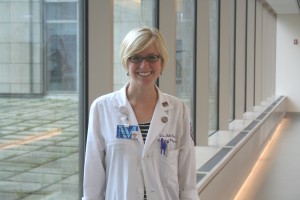By Jamie Friedlander
Nearly 45 percent of ER visits from nursing home residents on Medicare or Medicaid could have been avoided, according to the Centers for Medicare and Medicaid Services.
These ER visits ended up “accounting for 314,000 potentially avoidable hospitalizations and $2.6 billion in Medicare expenditures in 2005,” CMS reported as part of an on-going effort to reduce ER visits with more preventative care.
Northwestern Memorial Hospital in Chicago is one of three hospitals across the country working to lower the number of nursing home residents that end up admitted to the hospital after an ER visit. The initiative is part of GEDI WISE, a Health Care Innovation Award funded by CMS, according to Dr. Jill Huded, a geriatric fellow at Northwestern Memorial Hospital.
Other hospitals and nursing homes across the country are working to lower the rate of elderly patients admitted into emergency departments overall. They hope to reduce the number of ER visits that occur, thus also lowering the number of hospital admissions that happen from an ER visit.
“The number of older adults has doubled in the last decade presenting to the emergency room,” said Huded. “When presenting to the [ER], older patients are more likely to be admitted than their younger counterparts and it’s important to prevent this if possible, because the rates of delirium, cognitive impairment, falls and preventable infections goes up. We’d like to keep them in their environment they were living in previously, if possible.”

The goal of GEDI WISE is to reduce the number of preventable admissions to the hospital, decrease length of stay and reduce preventable readmissions by providing geriatric-specific care to older patients.
In order to do this, geriatric nurses are stationed at the ER at Northwestern Memorial, where they provide evaluations for patients. Then they brainstorm with ER physicians, nurses, social workers and physical therapists to try to make it possible for the elderly patients to go home if they don’t have an urgent medical need.
Potentially preventable emergency room visits can include injuries from falls, symptoms of a heart condition or pneumonia.
Hospitals themselves also pose an increased risk of infection for elderly adults.
Dr. June McKoy, a geriatrician at Northwestern University’s Feinberg School of Medicine, agreed that unnecessary ER visits can be detrimental to this frail older population.

“Change is really hard on older people,” she said. “If you’ve got a bunch of older people in the nursing home who might have cognitive decline, and you send them to a new environment where the lights are always on and there are strange people around, they will move from that baseline to getting worse.”
CMS launched an initiative in 2012 to try to lower the number of unnecessary visits that occur in nursing home residents. They partnered with seven organizations across the country in September 2012, including Indiana University, to do so.
Indiana University works with 19 nursing facilities in Central Indiana to try to lower the number of unnecessary hospitalizations. Their project, OPTIMISTIC, strives to reduce the number of ER visits of frail older patients through recognizing medical conditions in patients early, improving communication when transfers to hospitals do need to occur and improving advance care planning for terminally ill patients.
OPTIMISTIC, which just passed its two-year mark (and will run for four years total), deployed specially trained nurses to these 19 nursing facilities to help reduce the number of emergency room visits that occur.
GEDI WISE
Geriatric Emergency Department Innovations through Workforce, Informatics, and Structural Enhancements
OPTIMISTIC
Optimizing Patient Transfers, Impacting Medical Quality and Improving Symptoms: Transforming Institutional Care
“There are just so many reasons that unnecessary transfers occur,” said Dr. Kathleen Unroe of Indiana University, author of the study outlining preliminary data from the first year of OPTIMISTIC implementation.
The preliminary data for the first year at these 19 nursing facilities shows that 29 percent of transfers to emergency rooms were avoidable, which is a step down from the national average.
“My hope is that there will be value seen in putting these resources in the nursing home and that we will collectively figure out a way to do it over the long-term,” said Unroe. “I think there is an increasing expectation that nursing homes can and should take care of fairly sick and complicated patients and in order to do so, we need appropriate resources.”
Linda Colpron, executive director of Brownsburg Meadows. – one of the 19 Indiana nursing facilities participating in OPTIMISTIC – said early detection is key.

“There’s so much going on in a nurse’s day and the OPTIMISTIC program has really honed us into being proactive and not missing the little signs that somebody might be getting an infection, catching that right away and getting treatment so that they don’t deteriorate and have to go out,” she said.
Rita Gould, an assisted living aid at The Holmstad Retirement Community in Batavia said that most of the time, a fall is what makes a nurse decide to send a resident to the emergency room.
Gould added — on a personal note — that her mother-in-law and father-in-law, who have since passed away, didn’t feel as though they were treated fairly at times because of their older age.
“They definitely felt that because they were getting older, they didn’t quite get the attention or the care that they really would’ve liked,” said Gould.
McKoy said the elderly population is the most underserved medically.
“This is a graying population,” said McKoy. “And the most disparate population on earth is the aged. People don’t see them. They’re there, but people don’t really see them.”


